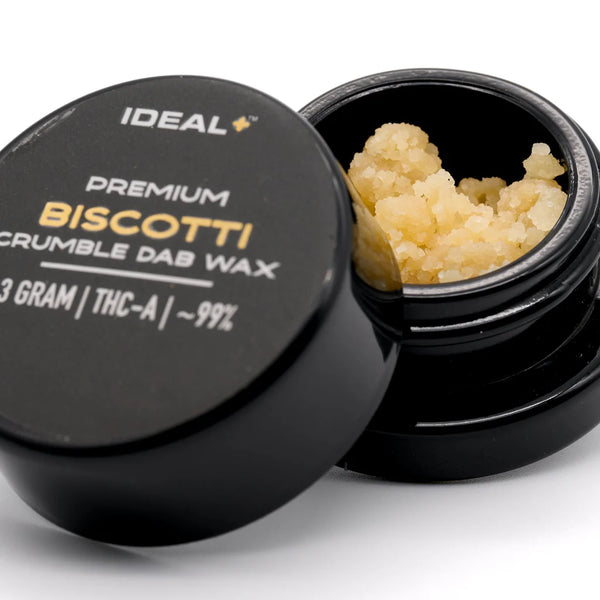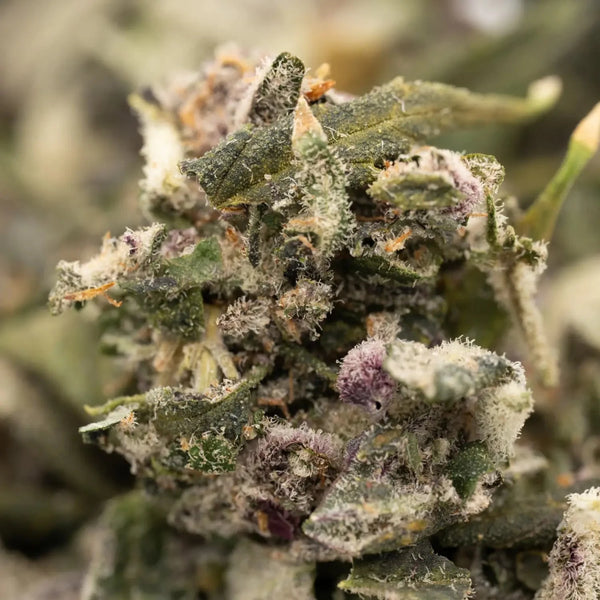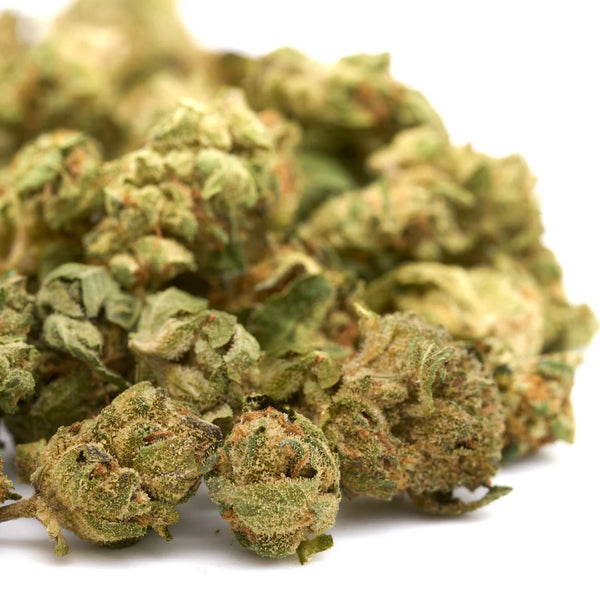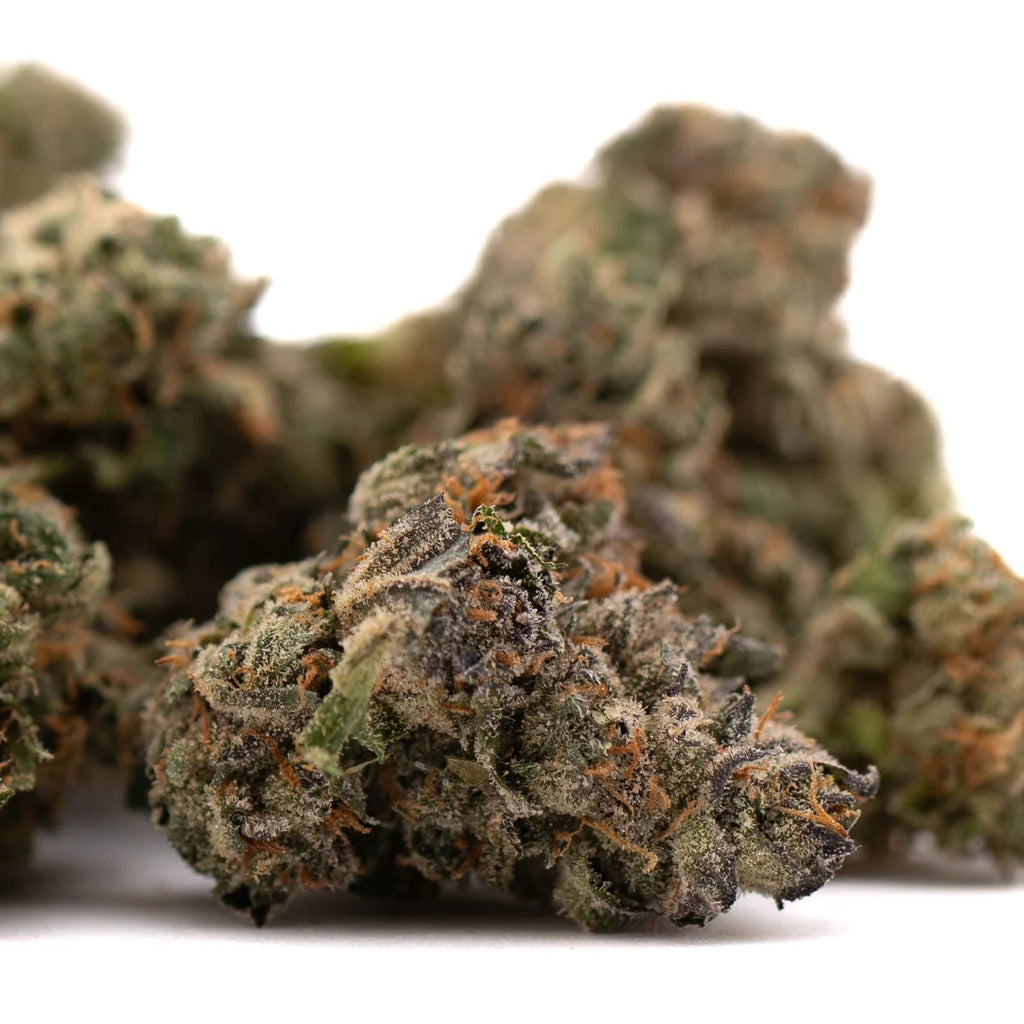No Products in the Cart
INDOOR THCA FLOWER 5g - $39.99 | GREENHOUSE THCA FLOWER 7g - $34.99

The cannabis consumption landscape has evolved dramatically, presenting enthusiasts with an important choice: THCA concentrates vs flower. Whether you're wondering if you should use THCA concentrates or stick with traditional flower, this comprehensive guide will help you navigate the difference between THCA concentrates and flower to make an informed decision that suits your lifestyle, experience level, and preferences.
Both concentrates vs bud offer unique advantages, and understanding these differences is crucial for optimizing your cannabis experience. From potency levels to consumption methods, flavor profiles to cost considerations, we'll explore every aspect of this THCA comparison to help you determine which option aligns best with your needs.
THCA concentrates are highly refined cannabis extracts that isolate tetrahydrocannabinolic acid (THCA) and other cannabinoids from the plant material. Through sophisticated extraction processes using solvents like butane, propane, CO2, or solventless methods like heat and pressure, manufacturers create products with extraordinary potency levels ranging from 70% to 99% THCA content.
The extraction process removes plant matter, lipids, and unwanted compounds, leaving behind a concentrated form of cannabinoids and terpenes. This results in various textures and consistencies, including shatter (glass-like and brittle), wax (soft and crumbly), budder (creamy and spreadable), live resin (terpene-rich with sauce-like consistency), diamonds (crystalline THCA structures), and rosin (solventless extract made through heat and pressure).
Cannabis concentrates appear as golden, amber, or sometimes clear substances with textures ranging from glass-like to buttery. Their concentrated nature means a tiny amount delivers significant effects, making them highly efficient for experienced users with elevated tolerances.
THCA flower refers to raw, unprocessed cannabis buds harvested directly from the cannabis plant. These natural flowers contain THCA in its acidic form alongside the full spectrum of cannabinoids, terpenes, and other beneficial plant compounds. Unlike concentrates, flower maintains its natural state with typical THCA percentages ranging from 15% to 30%, depending on the strain and growing conditions.
The cultivation process involves careful growing, monitoring, harvesting at peak maturity, and proper curing to preserve cannabinoids and terpenes. This traditional form of cannabis has been consumed for centuries and remains the most recognizable and accessible option for consumers worldwide.
THCA flower provides the full plant experience, including the entourage effect where various cannabinoids and terpenes work synergistically to enhance therapeutic benefits. The flower's structure includes trichome-covered buds (where cannabinoids concentrate), aromatic terpenes that define strain characteristics, natural plant compounds that contribute to effects, and varying density and color depending on genetics.
When comparing concentrate potency to flower, the difference is substantial and represents one of the most significant distinctions between these consumption methods.
Concentrates deliver ultra-high THCA content, typically between 70-99%, meaning you're getting nearly pure cannabinoids. Only minuscule amounts are needed to achieve desired effects—often just a rice-grain-sized dab suffices. The effects manifest almost immediately, usually within seconds to minutes, providing THCA efficiency that's unmatched.
This extreme potency makes concentrates incredibly efficient, but it also means tolerance can develop more rapidly. Regular concentrate users often find they need increasingly larger amounts over time, which is an important consideration for long-term consumption patterns.
Flower contains moderate THCA levels, generally 15-30%, which is still potent but significantly less concentrated. More material is required to achieve similar effects compared to concentrates—a typical session might involve 0.5 to 1 gram. Effects develop more gradually, usually within 5-15 minutes, providing a gentler onset that many users prefer.
This moderate potency makes flower more suitable for beginners who want to ease into cannabis use without overwhelming experiences. Additionally, tolerance builds more slowly with flower, allowing users to maintain consistent dosing over longer periods.
To illustrate the efficiency difference: if you want to consume 50mg of THCA, you would need approximately 0.05-0.07 grams of concentrate (80-90% THCA) versus 0.25-0.33 grams of flower (15-20% THCA). This means concentrates are roughly 4-5 times more efficient per gram, though this efficiency comes with higher upfront product costs.
The way you consume THCA flower vs dabs significantly impacts your experience, required equipment, and learning curve.
Dabbing remains the most popular method for consuming concentrates. This involves heating a specialized nail or banger (typically made of quartz, titanium, or ceramic) to high temperatures, then applying the concentrate to the hot surface where it instantly vaporizes. Users inhale the vapor through a dab rig, which resembles a water pipe.
Vaporizing concentrates in specialized pens or e-rigs offers a more portable and controlled experience. These devices heat concentrates to precise temperatures, preserving terpenes and providing smoother hits.
Enhancing flower by adding small amounts of concentrate to joints or bowls creates a "moonrock" or "twaxing" experience, combining the benefits of both consumption methods.
The equipment requirements for concentrates include a dab rig or e-rig ($50-500), a torch or e-nail ($20-200), dabbing tools ($10-30), and carb caps for temperature control. This represents a steeper learning curve, as proper technique requires understanding temperature ranges, timing, and handling sticky concentrates safely.
Smoking flower offers the most traditional and accessible consumption method. Rolling joints, packing pipes, or loading bongs requires minimal equipment and technical knowledge. This familiarity makes flower the preferred choice for social settings and those who appreciate ritualistic aspects of cannabis consumption.
Vaporizing flower through dry herb vaporizers provides a healthier alternative to combustion while preserving flavor and efficiency. These devices heat flower to temperatures that release cannabinoids without burning plant material.
The equipment needs for flower are minimal: rolling papers ($2-5), pipes or bongs ($10-100), or dry herb vaporizers ($60-300). The simplicity of smoking flower means virtually anyone can start consuming immediately without extensive preparation or technical expertise.

The flavor entourage effect differs dramatically between concentrates and flower, impacting both taste and therapeutic benefits.
Concentrates deliver isolated terpene flavors that can be extraordinarily intense and pure. The extraction process concentrates these aromatic compounds, sometimes resulting in flavors more pronounced than the original flower. However, flavor quality depends heavily on the extraction method used.
Live resin concentrates, made from fresh-frozen material, preserve the most terpenes and deliver exceptional flavor. Cured concentrates, processed from dried flower, offer different flavor profiles that some users prefer. The purity of concentrate flavors means you taste the essence of the strain without plant matter interference, creating a cleaner, more defined taste experience.
Flower provides a full-spectrum sensory experience with natural terpene blends that create complex, nuanced flavors. Each strain delivers its unique combination of sweet, earthy, citrus, pine, or fuel notes. The entourage effect amplifies these flavors as multiple compounds interact, creating a more rounded taste profile.
However, flower flavor includes plant matter taste from combustion, which some users find harsh or unpleasant. Vaporizing flower can enhance flavor by eliminating smoke while preserving terpenes, offering a middle ground between smoking and concentrates.
Understanding whether flower is better than concentrates requires examining how each affects your mind and body.
Dabbing vs smoking weed produces notably different effects. Concentrates deliver rapid onset, with effects hitting within seconds of inhalation. The experience is significantly more intense, often described as more cerebral and focused. Some users report shorter duration compared to flower, though peak intensity is higher.
This intensity can overwhelm novices who aren't prepared for such powerful effects. Precise dosing becomes challenging since even slight variations in amount can dramatically alter the experience. New users should approach concentrates with caution, starting with the smallest possible amount and waiting to assess effects before consuming more.
Flower provides gradual onset with effects building over 5-15 minutes, allowing users to gauge their experience and adjust accordingly. The gentler nature makes flower ideal for THCA flower or concentrate for beginners, as it's nearly impossible to consume too much too quickly.
Many users report longer-lasting effects from flower, with full-body sensations rather than purely cerebral experiences. The entourage effect contributes to this, as the full spectrum of cannabinoids and terpenes work together. Pacing is easier with flower since you can take a hit, wait, and decide if you want more without committing to a large dose upfront.
Determining which is better THCA concentrates or flower from a financial perspective requires examining both immediate and long-term costs.
Concentrates demand higher equipment costs ranging from $100-700 for quality dabbing setups. Basic e-rigs start around $100, while high-end dab rigs with e-nails can exceed $500. Torches, tools, and accessories add another $50-100.
Flower requires minimal equipment investment. A pack of papers costs $2-5, a basic pipe runs $10-30, and even quality bongs rarely exceed $100-200. Dry herb vaporizers represent the highest flower-related expense at $60-300.
Concentrates typically cost $20-80 per gram depending on quality, extraction method, and location. Live resin and solventless options command premium prices, while basic wax or shatter costs less. Flower prices range from $5-20 per gram, with bulk purchasing reducing per-gram costs. Premium indoor flower tops out around $15-20 per gram, while quality outdoor flower may cost $5-10 per gram.
Despite higher per-gram prices, concentrates prove economical per session. A single 0.05-gram dab costing $1-4 delivers effects equivalent to a 0.5-gram bowl of flower costing $2.50-10. Over time, concentrate efficiency can offset higher product prices.
Flower requires more material per session but costs less upfront. Regular users might consume 1-3 grams daily, costing $5-60 depending on quality and location.
Cost-effectiveness depends entirely on usage patterns. Heavy daily users benefit most from concentrate efficiency, potentially saving money despite higher per-gram costs. Occasional users might find flower more economical since they don't need to invest in expensive equipment and can purchase small amounts as needed.
Tolerance development also impacts long-term costs. Concentrate users often experience rapid tolerance buildup, requiring increasingly larger amounts and potentially negating efficiency benefits. Flower users typically maintain more stable tolerance, keeping consumption costs predictable.

Maximum potency stands as the primary concentrate benefit. With 70-99% THCA content, concentrates deliver unmatched effects from minimal amounts. This efficiency makes them ideal for experienced users with high tolerances or those seeking powerful therapeutic effects.
Discretion offers another significant advantage. Concentrates produce less odor than burning flower, and vapor dissipates quickly. Portable concentrate pens allow consumption in situations where smoking would be impractical or socially unacceptable.
Flavor intensity appeals to connoisseurs who appreciate pure, pronounced terpene profiles. Quality concentrates deliver clean, potent flavors that showcase specific strains without plant matter interference.
Variety in textures and consistencies lets users choose products matching their preferences, from stable shatter to flavorful live resin. This diversity enables experimentation and customization.
Longer shelf life means concentrates maintain potency and flavor longer than flower when stored properly. Sealed containers kept in cool, dark places preserve concentrates for months without significant degradation.
Portability advantages come from compact size. A gram of concentrate occupies minimal space while providing numerous sessions, making travel and discrete storage simpler.
Expensive equipment creates barriers to entry. Quality dab rigs, torches, and accessories represent significant upfront investment that many users can't or won't make.
Steep learning curve frustrates beginners. Proper dabbing technique requires understanding temperature control, timing, and handling methods that take practice to master. Burns from hot equipment pose safety concerns for inexperienced users.
Overwhelming intensity makes concentrates unsuitable for novices or those with low tolerances. The powerful, rapid effects can induce anxiety or discomfort in unprepared users.
Rapid tolerance buildup forces regular concentrate users to consume increasingly larger amounts, diminishing efficiency benefits and increasing costs over time.
Less full-spectrum benefits may reduce therapeutic effects. While concentrates contain high cannabinoid levels, some extraction methods remove compounds that contribute to the entourage effect.
Accessibility makes flower the default choice for most consumers. Availability is universal, prices are reasonable, and no specialized knowledge is required to start consuming.
Traditional experience appeals to those who enjoy ritualistic aspects of cannabis culture. Rolling joints, passing pipes, and sharing bowls create social connections and familiar routines.
Full-spectrum effects provide comprehensive therapeutic benefits through the entourage effect. The natural combination of cannabinoids, terpenes, and other compounds may offer superior relief for various conditions.
Easier dosing allows gradual titration. Users can take a hit, wait, and assess before consuming more, making overconsumption nearly impossible with reasonable caution.
Lower tolerance impact means flower users can maintain consistent dosing over longer periods without requiring increasingly larger amounts.
Simple consumption eliminates technical barriers. Anyone can smoke a joint or bowl without special equipment, training, or preparation.
Lower entry cost lets users start with minimal investment. A pack of papers and a gram of flower costs under $25, making experimentation affordable.
Lower potency requires consuming more material to achieve desired effects, which can be inefficient for heavy users or those with high tolerances.
More material needed per session means purchasing larger quantities and replenishing supplies more frequently than concentrate users.
Bulkier storage presents challenges. Flower occupies significantly more space than equivalent concentrates, and proper storage requires humidity control to prevent degradation.
Shorter shelf life means flower loses potency and flavor more quickly than concentrates. Even with proper storage, flower begins degrading within months.
Stronger smell makes discretion challenging. Burning flower produces unmistakable, lingering odors that can attract unwanted attention or disturb others.
Less efficient consumption through combustion wastes cannabinoids and produces potentially harmful byproducts. Even vaporizing flower proves less efficient than concentrates.
An experienced cannabis user comfortable with potent effects and rapid onset. Concentrates demand respect and understanding that comes from previous flower experience.
Managing a high tolerance that makes flower inefficient or unsatisfying. Concentrates provide the potency necessary to achieve desired effects when flower no longer suffices.
Someone who values efficiency and wants maximum effects from minimal consumption. The convenience of carrying a small concentrate container versus multiple grams of flower appeals to efficiency-minded users.
An enthusiast who enjoys the dabbing ritual. The process of preparing equipment, heating nails to precise temperatures, and executing proper technique becomes meditative and rewarding for many users.
Seeking maximum potency for therapeutic purposes. Medical users requiring strong symptom relief may find concentrates more effective than flower.
Someone who prefers intense flavor and wants to experience pure terpene profiles. Concentrate connoisseurs appreciate the clean, powerful tastes that showcase extraction quality.
Requiring discretion due to living situations, travel needs, or social considerations. Concentrates offer the lowest profile consumption method aside from edibles.
Dealing with limited storage space. A single concentrate container provides dozens of sessions while occupying minimal room.
New to cannabis or have limited experience with THCA products. Flower's gradual onset and moderate potency provide the forgiving introduction necessary for building understanding and confidence.
Someone who prefers traditional methods and enjoys smoking or vaporizing flower. The familiar ritual holds cultural significance and personal meaning for many users.
Looking for gradual effects that build slowly and last longer. Flower's onset pattern allows better control and reduces the risk of consuming too much.
A person who enjoys rolling or smoking as part of the experience. The process of preparing and consuming flower provides satisfaction beyond just effects.
Someone who values full-spectrum experiences and wants comprehensive entourage effect benefits. Medical users may find flower's natural compound balance more therapeutically effective.
Budget-conscious regarding initial investment. Flower requires minimal equipment expenses, allowing you to start consuming immediately without significant upfront costs.
An enthusiast who appreciates strain variety and wants to experience diverse terpene profiles, growth characteristics, and appearance differences between cultivars.
Seeking easier dosing control. Flower's slower onset and lower potency make it nearly impossible to consume too much too quickly.
Many experienced users maintain both concentrates and flower in their rotation, using each for different occasions and purposes. This combined approach offers several benefits:
Efficiency when needed: Use concentrates for quick, powerful effects before activities requiring immediate relief or when discretion matters most.
Social and relaxation: Reserve flower for social sessions, leisurely evenings, or times when you want to savor the traditional experience.
Tolerance management: Alternating between concentrates and flower can help prevent rapid tolerance buildup and maintain sensitivity to both.
Occasion-appropriate choices: Morning concentrate dabs for focus, afternoon flower sessions for relaxation, evening combinations for creativity—customize consumption to match activities.
Cost optimization: Stretch your budget by using concentrates when efficiency matters and flower when you want to make products last longer.

Concentrate tolerance develops significantly faster than flower tolerance due to constant exposure to ultra-high cannabinoid levels. Regular concentrate users often find diminishing returns within weeks, requiring tolerance breaks or increased consumption.
Managing tolerance with flower proves easier since moderate potency allows your endocannabinoid system to maintain sensitivity. Many users switch to flower periodically to reset concentrate tolerance.
Rotation strategies involve alternating between concentrates and flower on daily or weekly schedules, preventing over-adaptation to either consumption method.
Taking breaks becomes essential for heavy concentrate users. Tolerance breaks of 1-4 weeks can restore sensitivity and reduce consumption needs.
Prevention through mindful consumption, rotating strains, and avoiding automatic habitual use helps maintain consistent effects without ever-increasing doses.
Both consumption methods involve inhalation risks including respiratory irritation and potential long-term effects on lung health. No form of smoking or vaporizing is completely risk-free.
Concentrate purity offers potential advantages since properly made extracts contain fewer plant materials, pesticides, and contaminants than flower—assuming reputable sourcing and testing.
Flower combustion produces tar, carbon monoxide, and other byproducts that don't exist when vaporizing concentrates. However, combustion's risks are well-understood and generally considered manageable with moderation.
Vaporizing as an alternative for both concentrates and flower reduces risks by eliminating combustion while preserving effects. This represents the healthiest inhalation method for either consumption type.
Responsible use requires starting with minimal doses, understanding your tolerance, never driving under influence, and respecting that both concentrates and flower are potent substances demanding caution.
Recommended starting doses: For concentrates, begin with dabs half the size of a rice grain and wait 15-30 minutes before considering more. For flower, take 1-2 hits and wait 15-20 minutes to assess effects.
The THCA concentrates or flower debate has no universal answer—only personal preferences shaped by experience level, budget, consumption habits, and desired effects. Both offer legitimate advantages that appeal to different users in different situations.
Experience level matters most when choosing between these options. Beginners should almost always start with flower to build understanding and tolerance before exploring concentrates. The gradual onset, moderate potency, and forgiving nature of flower provide the ideal learning platform.
Budget considerations influence decisions significantly. While concentrates offer superior efficiency per use, the high equipment costs and product prices may strain budgets. Flower's minimal entry requirements and lower per-gram costs make it accessible to virtually anyone.
Trying both represents the ideal approach if circumstances allow. Experience with each consumption method provides perspective impossible to gain otherwise. Start with flower, develop confidence and tolerance, then experiment with concentrates to discover your preferences.
The reality is that most experienced users find value in both concentrates and flower, maintaining each for appropriate situations. THCA concentrates excel when efficiency, potency, and discretion matter most. Flower shines in social settings, relaxation scenarios, and times when you want to savor the complete cannabis experience.
Whichever path you choose, respect the potency of both options, start conservatively, and always prioritize safety and responsible consumption.
Q: Are concentrates stronger than flower? Yes, concentrates are significantly stronger than flower, containing 70-99% THCA compared to flower's 15-30%. This means concentrates are roughly 3-6 times more potent per gram.
Q: Is THCA flower or concentrate better for beginners? Flower is definitively better for beginners. The gradual onset, moderate potency, and easier dosing control make flower much more forgiving while you learn your tolerance and preferences.
Q: How much do I need to spend to start using concentrates? Expect to invest $100-200 minimum for a basic concentrate setup including a simple dab rig, torch, and tools. Budget options exist, but quality equipment ensures better experiences and safety.
Q: Can I add concentrates to flower? Absolutely. Adding small amounts of concentrate to joints or bowls—called "twaxing"—combines the benefits of both consumption methods and creates powerful enhanced experiences.
Q: Which method is more cost-effective long-term? It depends on usage patterns. Heavy daily users benefit from concentrate efficiency despite higher per-gram costs. Occasional users typically find flower more economical overall.
Q: Do concentrates taste better than flower? Neither tastes objectively better—it's preference-based. Concentrates offer intense, pure terpene flavors, while flower provides complex, full-spectrum taste experiences.
Q: How long do concentrates vs flower stay fresh? Concentrates maintain potency and flavor for 6-12+ months when stored properly. Flower begins degrading within 3-6 months even with ideal storage conditions.
Q: Will concentrates make my tolerance too high for flower? Regular concentrate use can elevate tolerance significantly, making flower feel less potent. However, tolerance is reversible with breaks or by switching back to flower exclusively for a period.
Q: What's the healthiest way to consume either concentrates or flower? Vaporizing represents the healthiest inhalation method for both, as it eliminates combustion byproducts while preserving cannabinoids and terpenes.
Q: Should I use THCA concentrates if I have low tolerance? Generally no. Low-tolerance users should build experience and comfort with flower before exploring concentrates. The intensity can be overwhelming and potentially